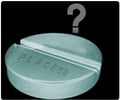A brain scan with functional MRI (fMRI) was all it required to identify the child patients with anxiety disorder, who will respond to talk therapy.

Conversely, children who showed fear while looking at fearful faces benefited from the treatment, which is also known as 'talk therapy', the researchers found.
"Anxiety and fear are intrinsically linked, so how the brain's fear centre responds would naturally affect how anxiety disorders manifest," said lead author and a fourth year medical student Steve Rich.
"Our most robust finding indicated that some anxiety disorder patients have more anxiety towards happy faces than fearful ones, and those patients were the least likely to respond to cognitive behavioral therapy," Rich said.
"The questions we were trying to answer were: What emotions make people afraid when they witness them on others' faces, and does that pattern predict response to talk therapy," said Rich.
The researchers found a significant correlation, indicating that pre-treatment fMRI can be used to select patients who likely do well with talk therapy alone, and those that may require other therapy, such as medication.
Advertisement
He added that further studies are required to confirm the results.
Advertisement
The study was presented at the annual meeting of the Society for Neuroscience in San Diego.
Source-ANI















